
- •1.1Flags and National Symbols
- •1.1.3 London
- •1.3 History
- •1.3.1 Pre-Roman England
- •1.3.2 Roman Britain
- •1.3.3 The Anglo-Saxons, Celts, Vikings and the Dark Ages
- •1.3.4 The Norman Invasion
- •1.3.5 Norman and Other English Castles
- •1.3.6 The Tudors
- •1.3.7 Civil War and Oliver Cromwell
- •1.3.9 The British Empire
- •1.3.10 World War 1 and the /inter-wai/ years
- •1.4 Language
- •1.5.1 System of Government
- •1.5.2 System of Education
- •Infant School or Primary School
- •1.5.3 Law
- •1.5.4 Religion
- •1.6 Mass media
- •2.1 Flag and National Symbols
- •2.2.1 Physical Geography
- •2.2.2 Human Geography and Demographics
- •2.2.3 Washington dc
- •2.2.4 New York
- •2.3 History
- •2.3.1 Native Americans
- •2.3.2 Immigration and the creation of the usa
- •200 Mies
- •2.3.3 Racial inequality and the Civil War
- •2.3.4 Growth and expansion
- •2.3.5 The rise of modern America after ww1
- •2.4 Language
- •2.5.1 System of Government
- •2.5.2 System of Education
- •I.Fa gui
- •2.5.3 Law
- •2.5.4 Religion
- •2.6 Mass media
2.1 Flag and National Symbols
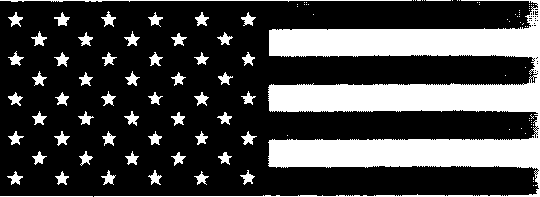
The flag of the United States of
America consists of thirteen equal horizontal stripes of red representing the 13 original colonies and a blue rectangle with 50 small, white, five-pointed stars, representing the 50 states.
The flag is commonly called the Stars and Stripes and less commonly Old Glory left.
The name "Old Glory" was coined in the 1830s, and was of particularly common use during the era of the 48-star version (1912 to 1959). The flag has gone through 26 changes since the "new union" of 13 states first adopted it. The origin of the U.S. flag design is uncertain. A popular story credits Betsy Ross for sewing the first flag from a pencil sketch of George Washington who personally commissioned her for the job. However, no evidence for this theory exists beyond Ross's own records.
The Pledge of Allegiance is a promise or oath of allegiance to the United States, and the Stars and stripes. It is commonly recited in unison at public events, and es-
pecially in school classrooms, where the Pledge is a mandatory morning ritual. In its present form, the words of the Pledge are:
I pledge allegiance to the Flag of the United States of America, and to the Republic for which it stands, one Nation under God, indivisible, with liberty and justice for all.
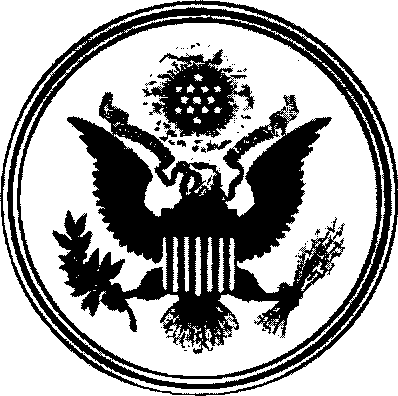
The Great Seal of the United States, first used in 1782, is used to authenticate certain documents issued by the Government. The phrase is used both for the physical seal itself, and more generally for the design represented upon it.
Though the United States has never adopted any "national coat of arms", the image from the obverse of the great seal, shown right, is used as a national symbol, and is used on state documents such as passports.
2.2.1 Physical Geography
The area of the USA is 9,631,419 km2, making it the 3rd largest country in the world. It has three land borders, two with Canada and one with Mexico, and one territorial-waters boundary with Russia. It is otherwise bounded by the Pacific Ocean, the Bering Sea, the Arctic Ocean, and the Atlantic Ocean.
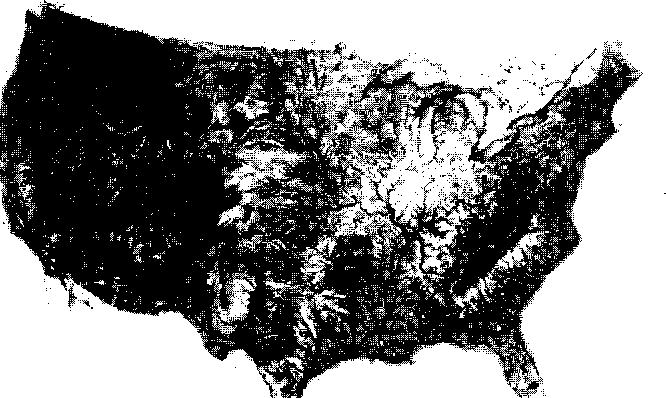
The United States landscape varies greatly: temperate forestland on the East coast, mangrove in Florida, the Great Plains in the centre of the country, the Mississippi-Missouri river system, the Great Lakes which are shared with Canada, the Rocky Mountains west of the plains, deserts and temperate coastal zones west of the Rocky Mountains and temperate rain forests in the Pacific Northwest.
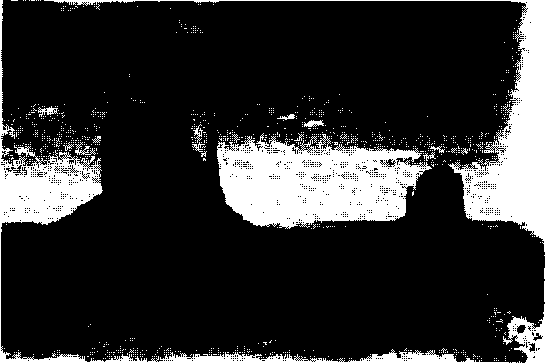
Mesas in the southwest of the USA
left
The climate varies along with the landscape, from tropical in southern Florida to tundra in Alaska. Most of the North and East experiences a temperate continental climate, with hot summers and cold winters. Most of the American South experiences a subtropical humid climate with mild winters and long, hot, humid summers. Rainfall decreases markedly from the humid forests of the Eastern Great Plains to the semiarid shortgrass prairies on the High Plains abutting the Rocky Mountains.
Arid deserts, including the Mojave, extend through the lowlands and valleys of the American Southwest from westernmost Texas to California and northward throughout much of Nevada. Some parts of the American West, including San Francisco, California, have a Mediterranean climate. Rain forests line the windward mountains of the Pacific Northwest from Oregon to Alaska.
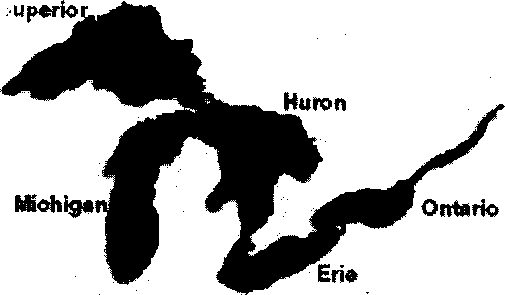
The Great Lakes are a group of five large lakes on or near the United States-Canadian border, sometimes referred to as inland seas.They are the largest group of fresh water lakes on the earth, and the Great Lakes-St. Lawrence system is the largest fresh-water system in the world. The St Lawrence river connects the Lakes to the Atlantic Ocean.
